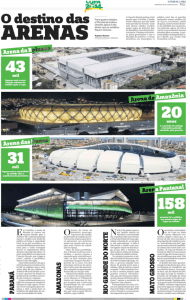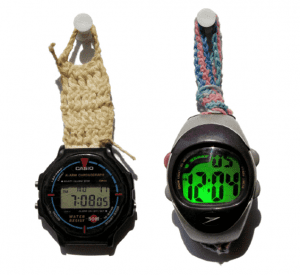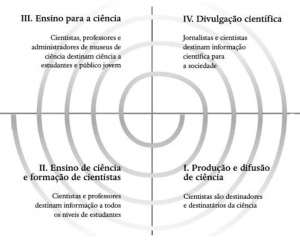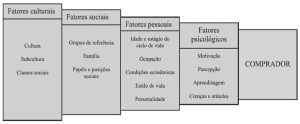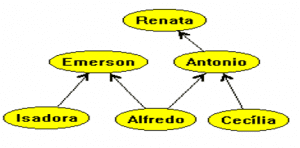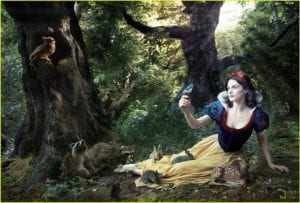ORIGNAL ARTICLE
DENDASCK, Carla Viana [1], OLIVEIRA, Euzébio de [2]
DENDASCK, Carla Viana. OLIVEIRA, Euzébio de. Cultural and biopolitical interactions in pandemic times: Strategies of action and interests of Youtube users in the period from March to June 2020. Revista Científica Multidisciplinar Núcleo do Conhecimento. Year 05, Ed. 08, Vol. 16, pp. 38-47. August 2020. ISSN: 2448-0959, Access link: https://www.nucleodoconhecimento.com.br/communication-en/cultural-and-biopolitical, DOI: 10.32749/nucleodoconhecimento.com.br/communication-en/cultural-and-biopolitical
SUMMARY
This article, carried out as part of the fulfillment of disciplines of the Doctoral Program in Communication and Semiotics held at the Pontifical Catholic University of São Paulo, aims to reflect on the culturaland biopolitical interactions adopted in the midst of the Covid-19 epidemic in Brazil between March and June 2020. For this, we used the analysis of the 50 most accessed channels on Youtube in the last 4 months, investigating whether and how users manifest their behaviors and interests through their respective searches in these media. Through these results, a brief analysis was carried out on the effectiveness of the implemented policies and their possible consequences.
Keywords: Pandemic, culturaland biopolitical interactions, Youtube.
INTRODUCTION
Since the technical media began to express the manifestations of cultures, interests and collective trends, certainly, society had not come across a crisis caused by the announcement of the state of Pandemic, carried out by the World Health Organization in March 2020, resulting from the new COVID-19, with recommendation of social isolation, which reshaped the routines of cities , leading hundreds of thousands of people to use their technological devices (smartphones, notebook, computers) as a priority means of communication, whether in work routine, studies, socialization, among others.
Despite this state pointed out as chaotic, it cannot be denied that this context created an environment for deep reflections, as well as opened doors to a fertile field of studies in all areas, especially in the field of communication. It is understood even the existence of an extension of places and spaces, those that were initially delimited and discussed as fixed places and open spaces, public and private, take complex dimensions. Although we agree with Belting (2009, p.81) that spaces have the characteristics of being organized in a heterogeneous and discontinuous manner, in the cyberspace created by the pandemic scenario, which previously transcended these dimensions, they then began to work in a sphere of displacement and understanding of time and space, since their limits break down physical barriers and begin to manifest themselves within an ambiguity, sometimes contradictory, sometimes contributing to new ways of living, thinking, organizing, working, celebrating, feeling, relating, among others.
During the classes of the PhD in Semiotic Communication at the Pontifical Catholic University of São Paulo, in this first semester of 2020, the field of reflection and studies did not distance itself from this context presented. First ly due to the need for a rapid adaptation of routines, especially in the changes of face-to-face environments to the online environment, both by students who have experienced adaptations of new study routines, as well as teachers who have had to learn a new communication system, a system that obeys certain processes and languages of their own. There is also the scenario of teaching the class itself, where both teachers and students had to adapt to new formats of interactions during the classes. This context certainly caused the initial sense of estrangement.
Later, it cannot be mentioned that all texts, although they were previously chosen to this pandemic state, served as a contribution to deepen contemporary reflections, almost as if they had been foreseen.Perhaps because the areas of studies and themes addressed by communication have this timeless power, or, perhaps, because of the mastery of teachers in appropriating the themes and bringing reflections to the present day. More than ever it was understood that without technical means it is not possible to speak in communication as science, thus, it was evidenced that technology is fundamental for the survival of communication as an area of knowledge.
These contributions made the monthly collections of the 50 most accessed channels on Youtube that are being carried out as part of the investigations of the final thesis, as well as the analysis of their communication strategies being resignified to the extent that the classes and texts worked were demonstrating new modes of manifestations and possibilities of understanding the interests of users.
Let us remember that the interest in the Youtube platform is especially due to the fact that, on this platform, the user “chooses” what he wants to watch, unlike other media, such as television that performs programming based on other strategies. On the youtube platform, the speed of communication, the democratization of content producers in different formats, the plurality of audiences, the forms of interactions and the actions to emerge to the extent “to what is chosen” makes this platform able to express the interests of a significant portion of contemporary society , either by niche or in the collective.
Thus, this material was organized in two moments: The first making a brief allusion about the pandemic, how policies were implemented and the creation of a communication of panic and fear by the main media in Brazil. In the second moment, we demonstrated how this reflected in the searches for social networks, especially on youtube. Finally, the conclusive ones make some reflections on some aspects that involve the interests and strategies that are being absorbed by the users of this network.
BRIEF CONSIDERATIONS ABOUT PANDEMIC / COMMUNICATION AND BIOPOLICIES OF CONTROL
Coronavirus is a species of mutant virus known to scholars since the 1970s. However, the variation known as COVID-19 or SARS-CoV-2 was discovered in the second half of 2019 in Wuhan, China. What led the World Health Organization to consider this virus as pandemic is its high power of propagation and the ability to progress to acute pneumonia, considered at high risk of morbidity and mortality for some groups of individuals (SILVA et. al. 2020).
The ignorance about its origin, its evolution variables, and consequences led authorities around the world to adopt a homogeneous discourse and take severe restrictive measures, leading the population to a panic situation. Society, from leaders to small groups, quickly highlighted the emotional inability to deal with fear, with impotence through life, taking measures that Agamben (2020) called frantic and irrational, without multidisciplinary studies as its consequences, adopting a discourse “for life” that ended up leading to hundreds of other socioeconomic problems , as well as public health, such as depression, anxiety, suicide, obesity, among others.
According to Agamben (2009, p.50), “the more devices spread and spread their power in every realm of life, the more the government is faced with an incomprehensible element […]”. In the pandemic process, the subjects were at the mercy of government biopolicies, control devices were implemented, and soon saw the installation of various forms of other crises, such as economic crisis, crisis between powers.
In contemporary society, such devices, despite acting in an impactful and direct way, are also able to take developments beyond the understandings of trends, which end up being responsible for the new forms of biopolitics. On COVID-19, Agamben (2020) pointed out that fear, fear of infecting and infecting others led the biopolicies of restriction of freedom to be approved, even without many discussions about its consequences, by much of the world’s population. World authorities and the media have come together to spread the sense of panic, affirming the growing trend of the state of exception that in this case has allowed a kind of “militarization” to do what it means with an entire society on the part of those who have power.
For an instant he forgot the “multiplicity of social dramas” to look at only one problem, only a focus, and on his behalf, accept a veiled dictatorship, and in a way, supported by various audiences, using biopolitical techniques.
According to Lazzarato (2006, p.81): “The techniques that biopolitics are addressed to life, are directed to the living being as belonging to the human species. They aim to regulate the life affected by disease, unemployment, old age, death.”
The big problem is that this control action led to a social crisis of thinking, polarized positions that reduced the real pandemic problem to personal positions and conditions, preventing people from acting or thinking collectively, however, using terms such as “in the name of life” groups were divided, and statesmen leaders used these scenarios to make policies and biopolitics of control that acted on the principle and right of freedom , using diverse interest groups, in addition to appropriating these conditions so that emergency public policies would allow the absence of bids, driving a scenario for another crisis, “corruption”.
Between March and May, open television created a climate of panic and suspended normal programming to emphasize exhaustively on the pandemic. What should be information also became a political scenario and created a kind of vacuum between the necessary actions and conducts and those carried out, emphasizing the molding of bodies, but now ambiguously. The control society has experienced its discontrol, that is, information and technological advances continue, but what to do with this information to produce affirmative biopolicies in times of crisis if there is an existential crisis of fear? This answer still seems not to have been incorporated even by society, nor by its leaders. However, some clues about these developments can be found through the manifestations of interests according to the searches on social networks, as we will demonstrate in the sequence of this study.
YOUTUBE AS A FORM OF MANIFESTATION OF INTERESTS
As mentioned earlier, to gather the data of the doctoral thesis, are investigated the 50 most accessed channels of Youtube and the strategies used by these channels in creating content to reach their respective users. After March 2020, the period that began quarantine, we observed the creation of trends that previously did not exist, such as the prevalence of singers’ lives, the interest related to COVID-19 in the first two months, and the strong disinterest after the month of May. On the other hand, it was also evidenced the use of this platform in the education sector by some states, leading to increased access by the child and youth public. In this period, Youtube reviewed its internal policies and decided not to monetize the channels directed to these audiences, and there was then a fall in the production of content directed to this age group. Below is the table of the 50 videos of the most accessed channels of Youtube.
Table 1- 50 most accessed videos
| Category | March | April | May | June | ||||
| The amount | % | The amount | % | The amount | % | The amount | % | |
| Covid | 6 | 12% | 4 | 8% | 2 | 4% | 0 | 0% |
| Live | 0 | 0 | 1 | 2% | 15 | 30% | 22 | 44% |
| Music | 6 | 12% | 8 | 16% | 4 | 8% | 0 | 0% |
| BBB | 3 | 6% | 3 | 6% | 0 | 0% | 0 | 0% |
| Movie Commentary | 3 | 6% | 2 | 4% | 0 | 0% | 0 | 0% |
| “Vlogueiros” – Demonstration of Routines | 6 | 12% | 3 | 6% | 3 | 6% | 5 | 10% |
| East Asia Culture | 1 | 2% | 1 | 2% | 1 | 2% | 4 | 8% |
| Physical Exercises | 3 | 6% | 1 | 2% | 2 | 4% | 0 | 0% |
| Comments on aesthetic beauty | 1 | 2% | 0 | 0% | 1 | 2% | 1 | 2% |
| feeding | 6 | 12% | 4 | 8% | 4 | 8% | 1 | 2% |
| Gospel/ Religious | 2 | 4% | 2 | 4% | 3 | 6% | 1 | 2% |
| Famous Actors Channels – television | 4 | 8% | 3 | 6% | 1 | 2% | 0 | 0% |
| Sport | 2 | 4% | 1 | 2% | 1 | 2% | 2 | 4% |
| Car | 1 | 2% | 1 | 2% | 0 | 0% | 1 | 2% |
| Computers/ Computers | 0 | 0 | 3 | 6% | 0 | 0% | 1 | 2% |
| Gaming | 3 | 6% | 3 | 6% | 2 | 4% | 5 | 10% |
| Comedy/Humor | 1 | 2% | 1 | 2% | 1 | 2% | 4 | 8% |
| Science and Education | 2 | 4% | 4 | 8% | 3 | 6% | 2 | 4% |
| House, Decoration and Garden | 0 | 0 | 0 | 0% | 0 | 0% | 1 | 2% |
| Horoscope | 0 | 0% | 2 | 4% | 0 | 0% | 0 | 0% |
| Business/ Entrepreneurship | 0 | 0% | 3 | 6% | 3 | 6% | 0 | 0% |
| Gossip | 0 | 0% | 0 | 0% | 3 | 6% | 0 | 0% |
| Total | 50 | 100% | 50 | 100% | 50 | 100% | 50 | 100 |
Source: Own
In the table above, it is possible to perceive some developments of the pandemic context through the interests of users. In March, when the isolation policy was created and there was still a lot of ignorance of the virus, the channels that addressed covid-19 stood out among the most accessed of the channel (12%) of the 50 most accessed channels. Even during the first two months (March and April) one of the most accessed channels had a context of pandemic terror and apocalyptic prediction of the virus. However, as the months passed, users’ interest was regressing until, this June, interest in the theme did not reach the 50 most watched daily videos.
On the other hand, the creation of lives and their representativeness in the access and interest of users, reaching the percentage of 44% (among the 50 videos) of the most accessed videos, demonstrate that these users are eager for entertainment, especially those events that bring the image / memory of social events.
It is also noted that, at the beginning of the pandemic, interests were more pulverized, there was high interest in the practice of physical exercise at home, comment ing films and entertainment. However, as the months went by, these interests were falling. Similarly, the channels of the famous, which began having a content attendance and, which consequently promoted a format of relevant accessibility, with the passing of months seems to have diminished their interest in the production of this type of content.
Already in April, when the first traces of economic crisis began to be evident, especially by the closing of trades, the channels of entrepreneurship and business had a high demand that, soon after, ceased to arouse interest.
There are some types of channels that maintain their level of demand and content production, presenting a certain percentage constancy in the months, among them: Cooking, games, education, sport and the vlogs that demonstrate the everyday lives of some youtubers.
FINAL CONSIDERATIONS
The study of communication as a science is able to provide subsidies for various areas of knowledge, as well as for society. Its signs and representations through its dynamics also provides a basis for understanding possible developments, as it was possible to observe through the data collected on Youtube.
The interests of users in the months of the pandemic show that initially there was a greater fear and search for understanding by this population of users. However, it presents, over the months, a collective disinterest, probably due to the political dimensions and polarized actions that this theme has taken in Brazil. It also seems that the population is not excited about the routine of home. The interest in live, and the proportion as these appear in the list of major highlights, also point to a population seeking a kind of abstraction through entertainment and anxiety in socializing what can cause a herd effect of meetings and parties before the desired period, further aggravating the effects of this pandemic. Finally, this study will continue its respective collections monthly, providing even more data for future analyses with a higher level of depth.
REFERENCES
AGAMBEN, Giogio. O que é o contemporâneo? E outros ensaios. Ed. Argos, Chapecó, 2009.
AGAMBEN, Giorgio et. al. Sopa de Whuan. ASPO. 2020
BELTING, Hans. Antroplogia de la imagem. Katz Editores. Madrid, 2009.
LAZZARATO, Maurizio. As revoluções do capitalismo. Ed. Civilização brasileira . Rio de Janeiro, 2006
SILVA, Anderson Walter Costa, et al. Perfil epidemiológico e determinante social do COVID-19 em Macapá, Amapá, Amazônia, Brasil. Revista Científica Multidisciplinar Núcleo do Conhecimento. Ano 05, Ed. 04, Vol. 04, pp. 05-27. Abril de 2020. ISSN: 2448-0959, Link de acesso: https://www.nucleodoconhecimento.com.br/saude/covid-19-em-macapa, DOI: 10.32749/nucleodoconhecimento.com.br/saude/covid-19-em-macapa
[1] Theologian, PhD in Clinical Psychoanalysis. She has been working for 15 years with Scientific Methodology (Research Method) in Scientific Production Guidance for Masters and Doctoral Students. Specialist in Market Research and Health Research. Doctoral Student in Communication and Semiotics (PUC SP).
[2] Biologist, PhD in Tropical Diseases, Professor and researcher of the Physical Education Course, Federal University of Pará (UFPA).
Submitted: August, 2020.
Approved: August, 2020.

